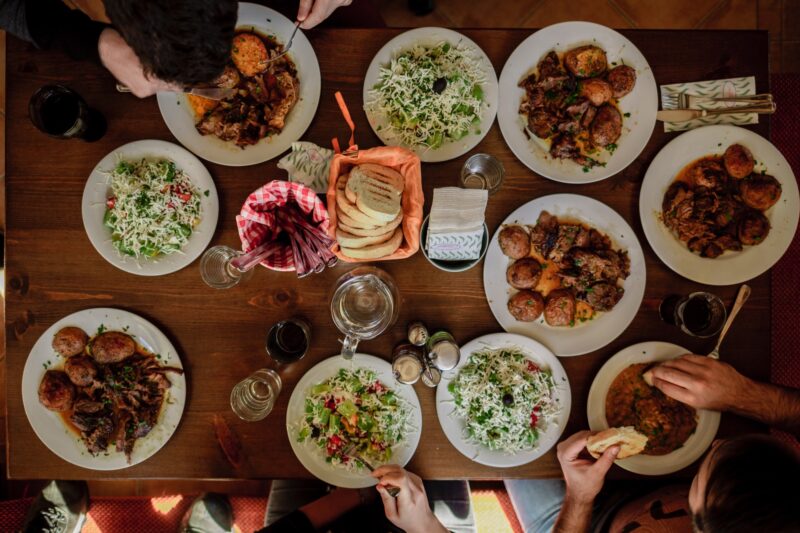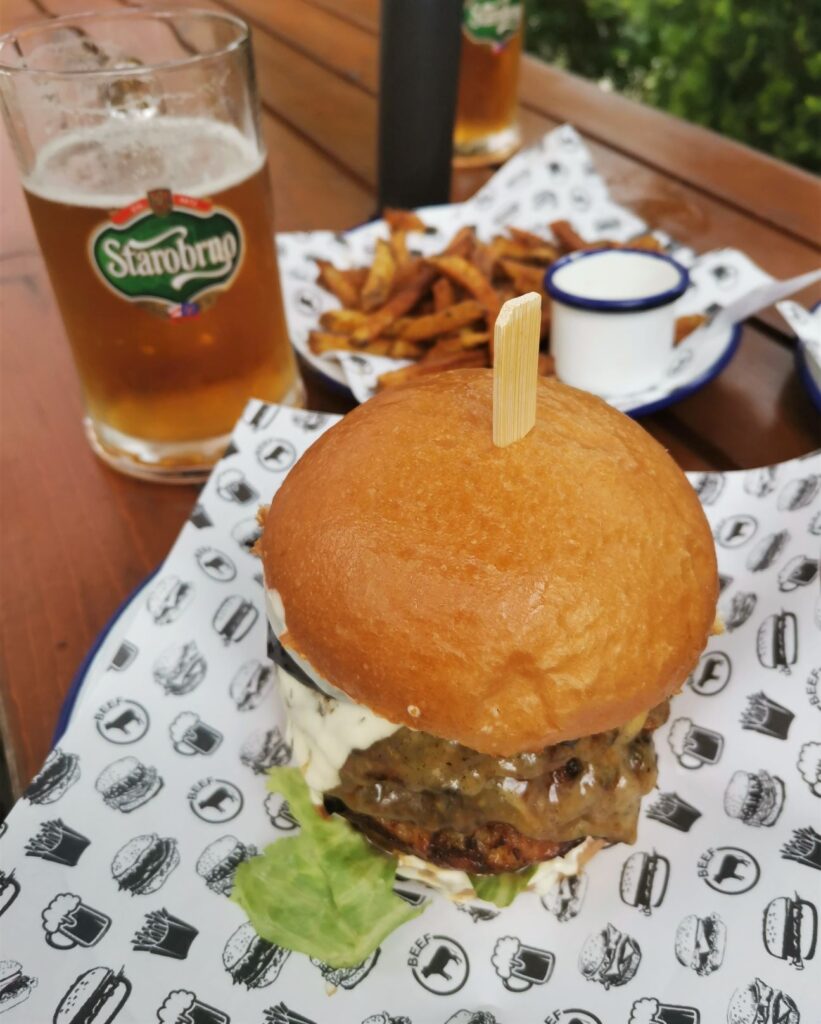Sofia
Travel Guide
Welcome to our Sofia travel guide, exploring the vibrant capital city of Bulgaria. Home to some of the Balkan’s most impressive architecture, Sofia is often forgotton about when it comes to Bulgaria’s most visited cities. However, with a great selection of bars, restaurants and things to do and see, it’s definitely worth a stop for any passing tourist.
Although a sprawling capital city, the main central area of Sofia is quite compact and is complimented by a well connected metro network. This all makes visiting the city easy and convenient, especially for those already planning a visit to Bulgaria. Alongside the selection of grand buildings, are some great parks, museums and lots of great restaurants, all offered at exceptionally reasonable prices compared to most other destinations in Europe.
Sofia Travel Guide Contents
Sofia Travel Guide
How to get to Sofia
Sofia Airport (SOF) is the main international airport in Bulgaria and serves the capital city, Sofia, and caters to connecting flights leaving and entering the country as well. The airport is located 10km east of Sofia city centre and is well connected to the centre. The airport is reasonably compact and has two terminals in total. There is a shuttle available every 15min which provides transfers between the terminals. There are cafes, restaurants and shops available throughout the airport. The main ways of getting to Sofia from the airport are:
Taxi – There is a taxi rank outside arrivals at the airport but it’s best to book your taxi at the desk in the arrivals hall or at one of the automated machines to avoid scams. A taxi from the airport to Sofia city centre will take 25min and will cost approx 15-20BGN ($9-$12), prices can increase slightly from 00:00 to 05:00 but are still very reasonable fares
Bus – There are two buses which go from the airport to the city centre, no.84 and no.184, both stop outside arrivals. However, both buses follow the same route and stop a few km outside the city centre, so to get to your final city centre destination, you will likely need a taxi from there, a different bus or the metro from there. The buses depart every 30min, take approx 40min to the closest city centre stop, and cost 1.6BGN ($1) for a one-way ticket
Metro – This is our preferred option for getting into the city centre. The metro is convenient to get on, with the station situated just outside terminal 2 arrivals, is very cheap, at 1.6BGN ($1) for a one-way ticket, and is quick. The metro departs approx every 15min from the airport station and will take you to the city centre stop, Serdika Station in 25min, with no changes. You can purchase tickets at the desk in the station or from an automatic ticket machine. If you are heading somewhere that is not close to one of the metro line 4 (yellow line) stops, then you will need to change, and a taxi may be more convenient in this case
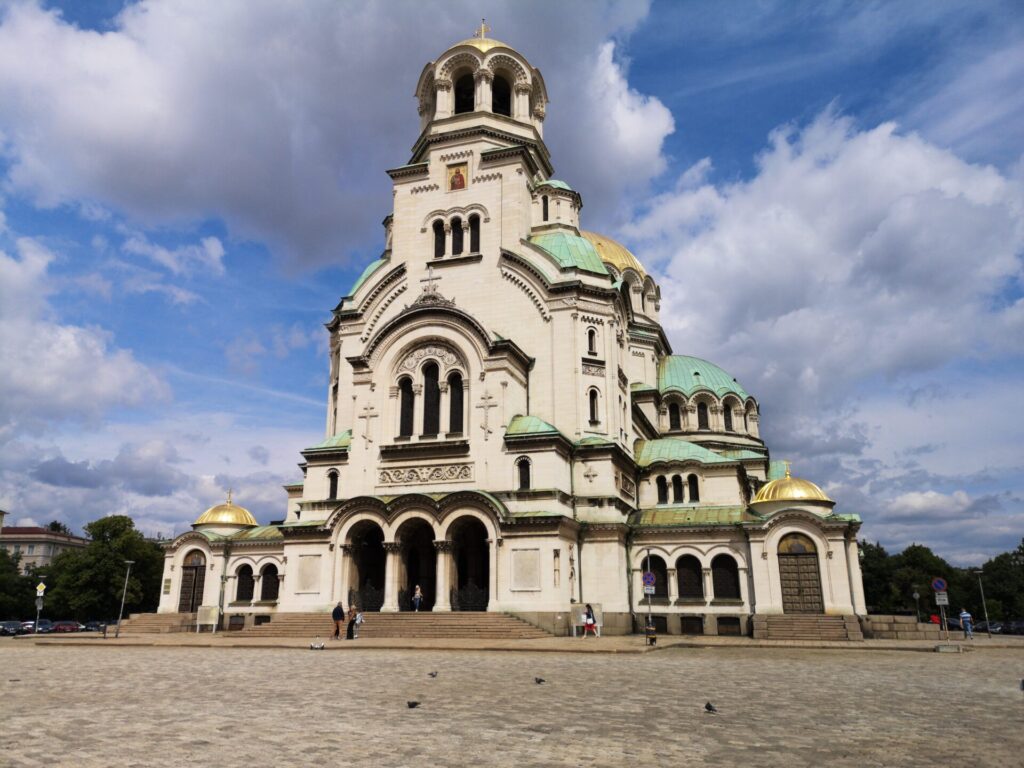
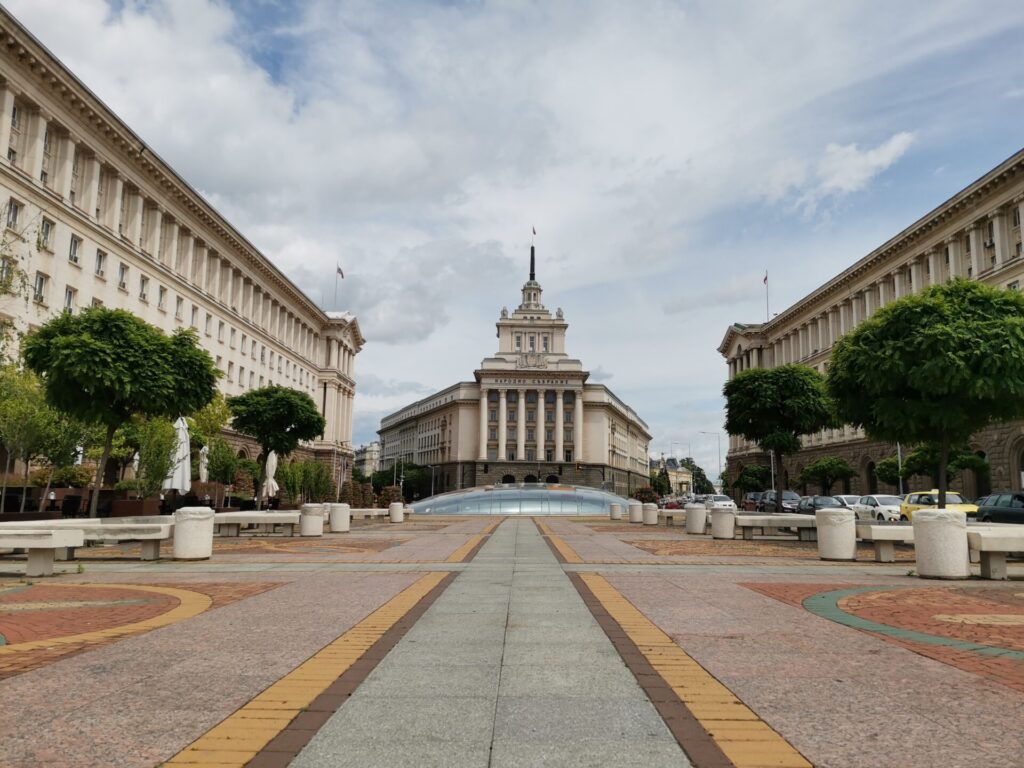
Areas to stay in Sofia
Despite having a reasonably compact city centre, several quite different neighbourhoods are popular for tourists to stay in Sofia city. As the city centre is quite well connected, you’ll generally be in easy reach of most attractions wherever you choose to stay, however, if you prefer to get around on foot and be as close to the action as possible, then where you stay could make a big difference to your Sofia trip. Here we take a look at where to stay in Sofia:
City Centre (Centrum) – By far the best area to stay in the city, as you will be close to most of the major landmarks and attractions, close to restaurants, shops and nightlife, especially the lively Vitosha Boulevard and will also be well connected to public transport. This isn’t the cheapest area to stay in the city centre, given its excellent location but you can still find some affordable mid-range hotels and apartments as well as luxury ones too. We’d recommend staying here for first-time visitors to the city and anyone who wants to be close to everything
Oborishte – Located east of the main city centre, this higher-end residential area is good for those that are looking to be close to most of the main attractions, and some great restaurants, but also want to be somewhere a little quieter
Lozenets – Located to the south of the main city centre, this is a prettier area with lots of cobblestone streets and a great selection of restaurants and bars, as well as a handful of great parks nearby
Vitosha District – Located at the base of Vitosha Mountain, on the edge of the city, this area is perfect for anyone who is looking to spend some of their time in the city exploring the mountain and some of the nearby attractions, but not advisable for anyone wanting to be close to the city
Jenski Pazar – Located near the railway station, this is considered the budget area to stay in as it has lots of budget hotels and hostels. There is also a large outdoor market located here. A good area if you require budget accommodation but otherwise not as well connected
Accommodation in Sofia
As a capital city, Sofia has plenty of accommodation options ranging from hostels and budget hotels to mid-range hotels, apartments and high-end hotels. Accommodation options are generally very reasonably priced in Sofia and your money will go further here than in many other European cities. For budget options, the Jenski Pazar area of the city, near the main railway station, is a good place to look. Here are our top picks of where to stay in Sofia:
Budget Option | Hotel Generaator Sofia – Located between Sofia central train station and the city centre, Hotel Generaator provides guests with simple, modern rooms in a convenient location. Room options include private rooms and apartments, all with private bathrooms and breakfast included
Mid-range Option | Central Hotel – Central Hotel is in an excellent location, just a few minute’s walk from the main sites of Sofia and Vitosha Boulevard. The hotel feature a relaxation centre with a sauna, hot tub and steam bath, as well as a variety of comfortable and well-equipped rooms
Apartment Option | Campbells Central Apartment – Campbells central apartment is located just a 10-minute walk from Serdika station and is a compact, well-equipped apartment in a quiet but vibrant neighbourhood. The apartment features a small kitchenette, a washing machine, a small balcony and a seating area. There are a number of steps to climb to the apartment so it is not suitable for large luggage or those with mobility issues
High-end Option | Sense Hotel Sofia – For a luxury experience in Sofia, Sense Hotel is the perfect option. The hotel has stunning views over nearby Saint Aleksander Nevski Cathedral from its rooftop bar, as well as an indoor pool, spa and fitness centre. All rooms are spacious, contemporary and well-equipped
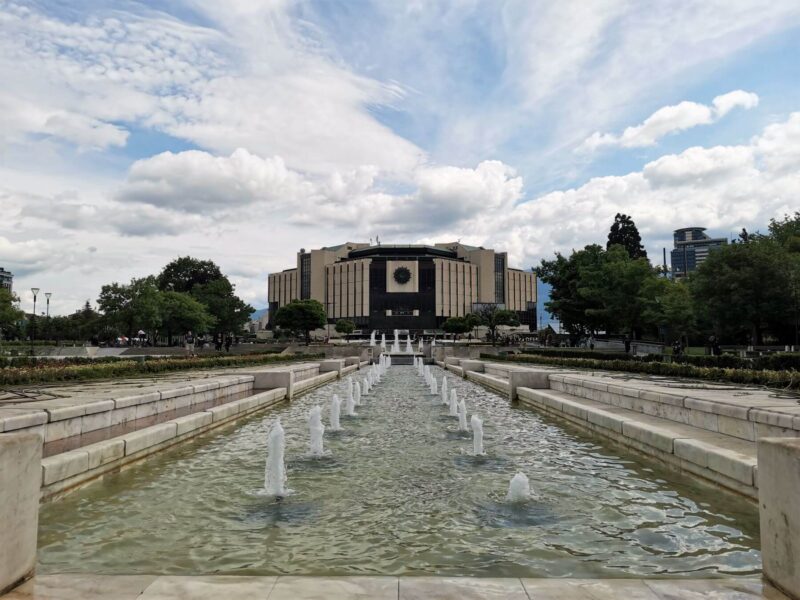
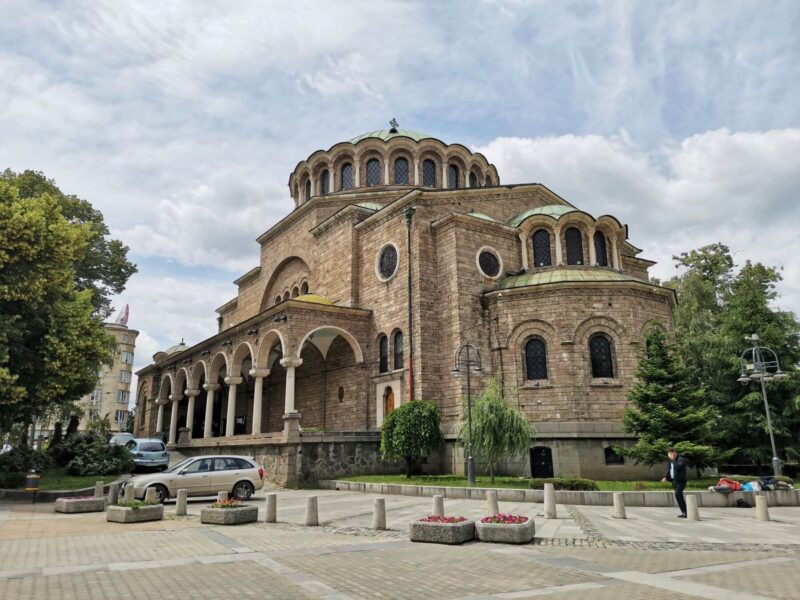
How to get around Sofia
Sofia is a very well-connected city, and public transport is quite cheap, so if you need to use transport to get around then you will have no problems at all here. Likewise, the city centre and the main attractions are within close proximity to each other and most are within a 30min walk to the next, so if you can explore by foot, you will be rewarded with seeing some of the smaller, less-visited streets and landmarks of the city. Here are the most common types of transport for getting around in Sofia:
Taxi – There are lots of taxi’s available all over the city, however, there have been many reports of scams from taxis in Sofia and Bulgaria, charging higher prices for journeys etc so we advise using a ride-hailing app where possible
Ride-Hailing Apps – Yellow! taxi is the most popular ride-hailing app in Bulgaria and is very easy to use, we would advise using this over standard taxi’s to ensure you are not ripped off, plus it’s probably more convenient
Bus – The bus network in Sofia is quite extensive and will get you to most parts of the city quickly and conveniently. Tickets cost 1.6BGN ($1) and are available to buy on the bus, from the driver, with exact change. You can also buy a 10 journey pass for 12BGN ($7.25)
Tram/Trolleybus – Using the same tickets as the bus network, and costing the same price, the tram is another great way to get around the city, where it can be used. Tickets can be bought onboard or at ticket machines at some larger stops
Metro – With two lines in total, the metro may sound small but it covers most of the main parts of the city and offers a great airport connection. Tickets cost the same as the bus, tram and trolley bus at 1.6BGN ($1) for one way ticket, and can be bought at the desk or machines in the stations
Things to do in Sofia
Sofia is home to some of the best museums, parks and monuments in Bulgaria and has plenty to see and do. We don’t want to bore you with a list of all Sofia’s top attractions, so here is our compact list of 5 things to do in Sofia:
Cathedral Saint Aleksandar Nevski – Completed in 1912, this Bulgarian Orthodox Cathedral is probably the main tourist attraction in Sofia and a stunning landmark of the city. Built in a Neo-Byzantine style, the church features an interesting layered style of architecture with its many domes, including ones covered in real gold. It’s free to enter inside and is open every day from 07:00 until 19:00
Vitosha Boulevard – This is Sofia’s main street which, at 2.7km long, runs from the National Palace of Culture right down to the Sveta Nedelya Orthodox Church. The street is pedestrianised and full of shops, restaurants and bars, all against the backdrop of Vitosha Mountain
National Palace of Culture & Park – Completed in 1981, this large building highlights the architecture of Bulgaria’s communist era. The surrounding gardens, framed by the long fountain running up to the Palace, are also a great place to people watch, relax and enjoy some greenery
Square of Religious Tolerance – A fantastic example of how different religions in Bulgaria live together peacefully, the religious square is an area, located at the end of Vitosha Blvd, which is home to the Sveta Nedelya Orthodox Church, Banya Bashi Mosque, Sofia Synagogue and St Joseph Cathedral. All are located within a few minutes’ walk of each other
Roman Ruins – After discovering many Roman ruins in the city, while building the metro system, restoration of the ruins at and around Serdika II station finished in 2016. The ruins are free to view and cover the Serdika area at the metro level
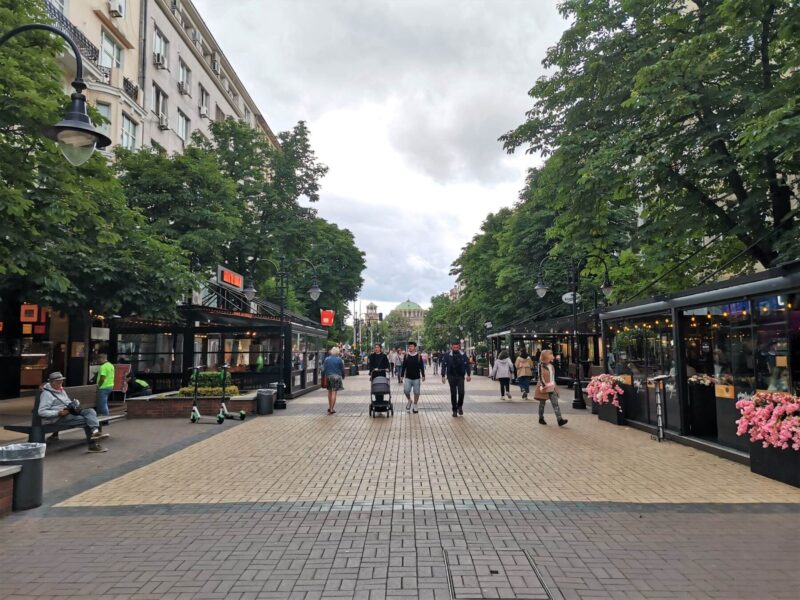
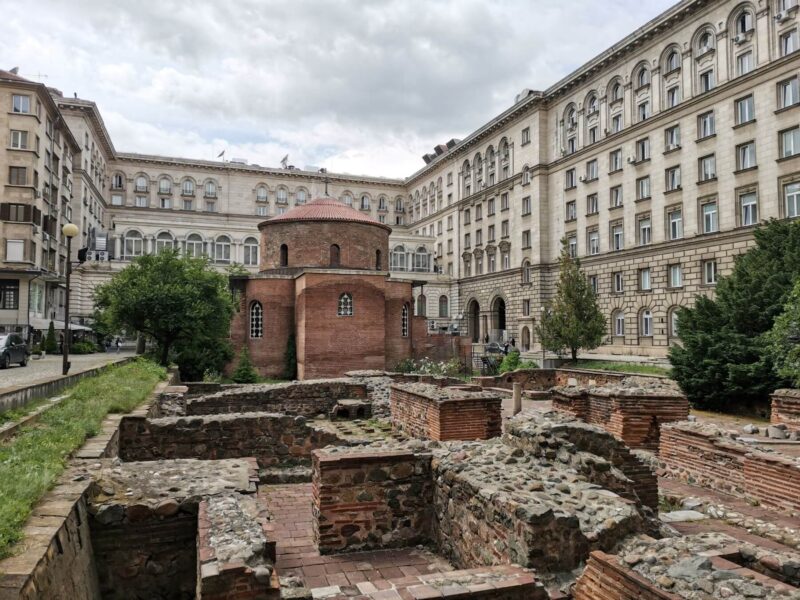
What to eat in Sofia
Bulgarian cuisine is similar to that in much of the Balkans, however, it is more diverse. There is a great range of restaurants in Sofia ranging from traditional Bulgarian, Turkish, Asian and Mediterranean. With over 1200 restaurants in the city, there is something for everyone and we found prices to be exceptionally reasonable, which means there is even more excuse to try more! If you want to try some of the local and national dishes of Bulgaria and Sofia, then here is what to eat in Sofia:
Sarmi – A staple of Bulgarian cuisine, this is a stuffed leaf dish. There are 2 types, one with grape leaves and the other with pickled cabbage leaves, both are delicious and commonly stuffed with a mixture containing ground meat or vegetables
Shopska Salad – The national dish of Bulgaria, this salad consists of tomatoes, cucumbers, onions, peppers and sirene cheese on top, which is a type of Bulgarian brined cheese
Stuffed Peppers – A simple dish but beautiful in flavour. Fresh peppers are usually stuffed with either ground beef or pork and rice, and then boiled
Meshana Skara – A hearty and filling meat platter commonly including kofte, pork steak, kebapche and pork skewer. As a side, french fries, lyutenitsa and a salad is standard, but other variations are available
Banitsa/Banichika – These are traditional pastry dishes, one in the larger form and the other smaller, commonly found in bakeries for breakfast. The pastry is made by layering a mixture of whisked eggs, natural yoghurt and white brined cheese between filo pasty, before being baked in the oven
Money - Sofia Travel Costs
The currency in Bulgaria is the Bulgarian Lev (лв, BGN). Credit & Debit cards are widely accepted throughout Sofia and there are plenty of ATMs which accept foreign cards. A service charge is sometimes added to the bill if it is not included, and you are happy with the service then a tip of 5-10% is the norm and you can round up for taxis. Sofia is a very reasonably priced destination and offers great value for money compared to many other destinations in Europe. As a result, it is suitable for both the budget and luxury travellers. Here’s a guide for what you can expect to pay in Sofia (per person) for:
A local draught beer – 3BGN – 4BGN ($1.80-$2.50)
A coffee – 2BGN – 4BGN ($1.25-$2.50)
A grab and go pastry – 1.50BGN – 3BGN ($0.90-$1.80)
Budget restaurant meal – 10BGN – 25BGN ($6-$15)
Mid-range restaurant meal – 25BGN – 45BGN ($15-$27)
High-end restaurant meal – 50BGN+ ($30+)
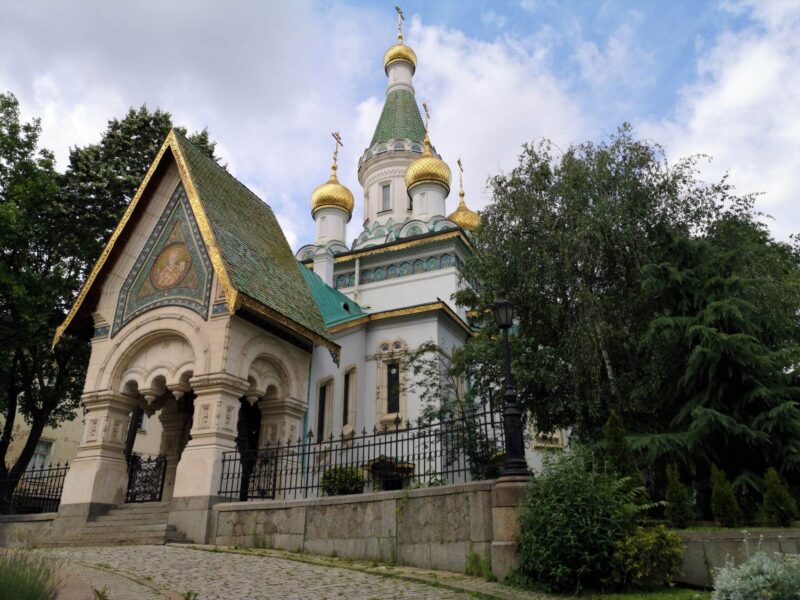

When to go to Sofia and for how long
The best time to visit Sofia is either April-May or September-October, this is outside of the peak season of July-August and when the weather is cooler, crowds are less and prices are cheaper. We recommend a trip of around 3 days to Sofia, which will give you enough time to see the main sites and get a feel for the city.
Local language and phrases
We always recommend that visitors to any destination try to make an effort and speak some of the local language. It will often go a long way and show respect to locals. We’ve covered some key Bulgarian phrases that will help you in our Bulgaria travel tips section.
Sofia travel tips
– Sofia is generally a safe city and is safe for lone travellers, including lone females but exercise the usual caution of scams and your personal belongings
– There are a range of places to eat including those specialising in vegetarian diets
– The tap water is safe to drink in Sofia and in Bulgaria in general
– If you require a Covid-19 PCR or Antigen test during or at the end of your journey in Bulgaria, then the main airports in the country all have very convenient and reasonably priced testing centres
Sofia travel guide written in August 2021
This site uses affiliate links. When you click on a link and purchase an item, we may be compensated on qualifying purchases. However, this is at no extra cost to you. See our affiliate disclosure for further information.
Sofia Travel Articles
Sofia Walking Tour Videos And Maps
Check out our Youtube Channel for more Sofia walking tours, and tours for other destinations too.
Sofia Historical Centre Route
A walking tour video highlighting the sights in the historical centre of Sofia with an accompanying map showing the route we walked
Vitosha Boulevard Route
A walking tour video down the main street of Sofia city centre, Vitosha Boulevard with an accompanying map showing the route we walked.
Sofia Centre Walking Route
A walking tour video highlighting the sights of the centre of Sofia with an accompanying map showing the route we walked.
Pin this Sofia Travel Guide to save it for later!


